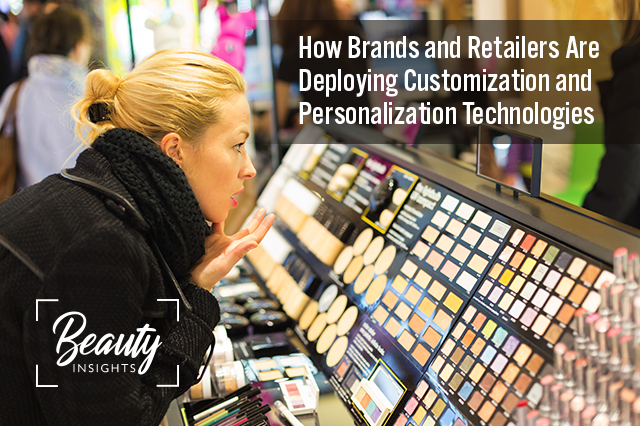
Nitheesh NH
This report is part of our Beauty Insights series, which explores prominent or emerging themes and trends in the global beauty market. In this report, we profile beauty technologies being used by some of the leading global beauty brands and retailers as they seek to deliver the customization and personalization experience customers are coming to expect.
 Source: Company reports[/caption]
Procter & Gamble (P&G) is using cutting-edge technologies to develop new beauty products and enhance the customer experience. Some of its major beauty tech products and services include:
Source: Company reports[/caption]
Procter & Gamble (P&G) is using cutting-edge technologies to develop new beauty products and enhance the customer experience. Some of its major beauty tech products and services include:
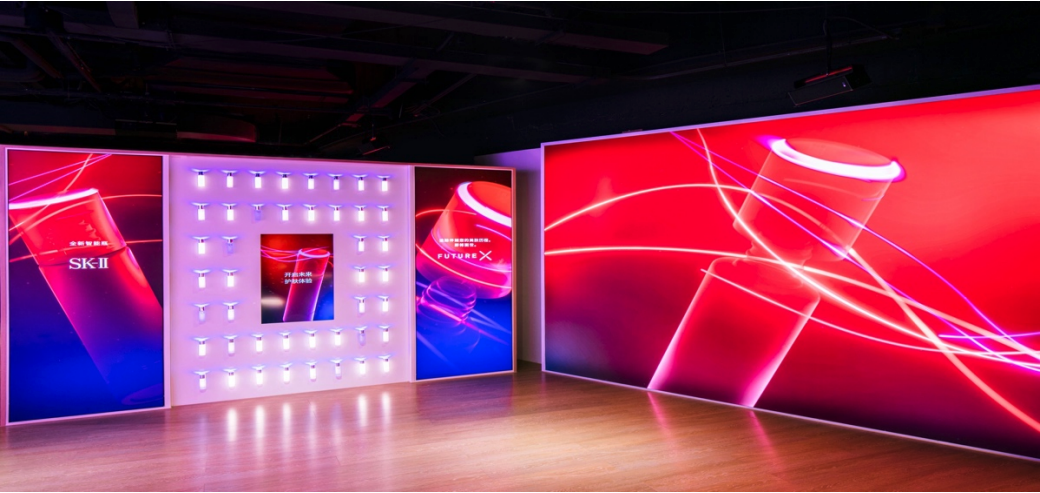 Future X Smart Store by SK-II
Future X Smart Store by SK-II
Source: P&G[/caption] L’Oréal is gearing up to offer customers virtual makeup and hair color try-ons, real-time beauty consultations online and AI-powered skincare diagnostics following its 2018 acquisition of Canada-based AI and AR company ModiFace. ModiFace has developed advanced 3D virtual make-up, color and skin diagnosis service technologies. The acquisition is a part of L'Oréal’s broader digital acceleration strategy to enhance its brands’ technology offerings to improve the beauty shopping experience—and drive engagement and the associated sales. L'Oréal introduced an AI-powered at-home skincare offering called Perso at CES 2020. The three-in-one system creates formulas for foundation and lipstick that will be unveiled at a later date. Perso is a four-step solution for customized skincare formulas. The user snaps a selfie with the Perso app; Perso uses ModiFace-powered AI to identify skin conditions such as large pores, dark spots or wrinkles; the app uses Breezometer geo-location data to assesses environmental conditions that could affect skin, such as pollution, humidity, UV index and pollen; finally, the user enters skincare goals, such as eradicating dark spots, pigmentation, pore size or dullness. The system analyzes all the data and offers a single portion of a personalized skincare product custom-made on the spot. Perso will be launched in 2021. [caption id="attachment_102726" align="aligncenter" width="700"] L’Oréal’s Perso
L’Oréal’s Perso
Source: L’Oréal[/caption] In 2017, L'Oréal subsidiary Lancôme launched Le Teint Particulier, a custom-made foundation machine that uses a handheld colorimeter, a type of digital scanner, to detect facial skin tone. The results are run through a computer that uses an algorithm that can choose from 20,000 different shades. The findings are sent to a device that mixes the foundation to create a custom foundation for the customer. [caption id="attachment_102727" align="aligncenter" width="700"] Lancôme’s Le Teint Particulier
Lancôme’s Le Teint Particulier
Source: Lancôme[/caption] In 2017, L’Oréal’s Research and Innovation Technology Incubator, in collaboration with the France-based hair care company Kérastase and consumer electronics company Withings, unveiled one of the world’s first smart hairbrushes: Kérastase Hair Coach Powered by Withings. The brush features a microphone that measures dryness, frizziness, split ends and breakage; a built-in accelerometer and gyroscope that analyses brushing patterns and brush stroke; conductivity sensors which measure whether the hairbrush is being applied on wet or dry hair; and, sensors which analyze hair quality during and after brushing. The brush vibrates to warn if the user brushes too hard, and a microphone and other sensors record the sounds of breaking hair, along with other factors, to build a profile of the user based on their hair. The brush shares the data through a dedicated mobile app and recommends products to complement the user’s hair care routine. [caption id="attachment_102728" align="aligncenter" width="700"] Kérastase Hair Coach Powered by Withings
Kérastase Hair Coach Powered by Withings
Source: L’Oréal
[/caption] Neutrogena introduced Neutrogena MaskiD at CES 2019. Neutrogena MaskiD is a personalized micro-3D printed face mask made from natural cellulose and skincare ingredients based on the customer’s unique needs. The MaskiD is used with the Neutrogena Skin 360 app that captures skin data and facial measurements to offer personalized recommendations. Neutragena launched the 2.0 version at CES 2020 with the first generation of NAIA, an AI-powered skin health coach. Neutrogena MaskiD provides personalization in three steps. First, consumers use a smartphone 3D camera to click a selfie, which creates a multi-dimensional map of the face, including measurements of lips, shape of the nose, space between the eyes and other unique physical characteristics. Then, the Neutrogena Skin 360 app analyzes the data to understand skin needs, and creates the virtual equivalent of a dermatologist, making a recommendation on ingredients and where they should be applied to specific parts of the face. Finally, the ingredients are produced using a proprietary 3D printing process onto a custom-fit hydrogel mask with specific ingredients to be applied to specific parts of the mask to deliver specific treatments to each part of the face. [caption id="attachment_102729" align="aligncenter" width="700"] Neutrogena MaskiD
Neutrogena MaskiD
Source: Neutrogena[/caption] HiMirror, a beauty-tech brand owned by Taiwan-based New Kinpo Group, developed one of the world’s first smart mirrors in 2016. The HiMirror has a built-in camera to capture an image of users faces each time they log in, which it scans for wrinkles, pores, brightness levels, red spots and fine lines. The beauty assistant then rates these factors from "good" to "poor” and sends beauty tips and personalized product recommendations. HiMirror also lets customers scan a product to reorder or receive notifications when expiration dates are coming up. In 2018, the company launched the product’s latest generation, the HiMirror Mini, with additional features such as touch screen, a USB charging outlet, LED makeup lights, a magnifying camera and a table stand. The HiMirror Mini is equipped with Amazon Alexa capabilities and can connect to social media platforms such as YouTube, Facebook, Spotify and Instagram. In 2019, the company launched Makeup Studio and HiTube features on HiMirror. The Makeup Studio uses AR technology that lets users virtually try on new makeup, including seven types of makeup with various colors, textures and patterns. HiTube lets users show YouTube videos on the screen to watch while getting ready, or minimize the image to hear only audio. In October 2019, HiMirror launched its newest model called HiMirror Slide. The HiMirror Slide comes equipped with slidable panels and a foldable, rotatable stand for easy storage, and landscape and portrait viewing. Similar to its counterparts in the HiMirror portfolio, HiMirror Slide gives skin analysis and offers personalized recommendations, along with other smart features, such as Amazon Alexa and social media connectivity. HiMirror showcased its Enterprise Pro version of the HiMirror Slide at CES 2020. This version will help retailers and others offering skincare services to better serve customers with personalized skincare tracking and analysis. [caption id="attachment_102730" align="aligncenter" width="700"]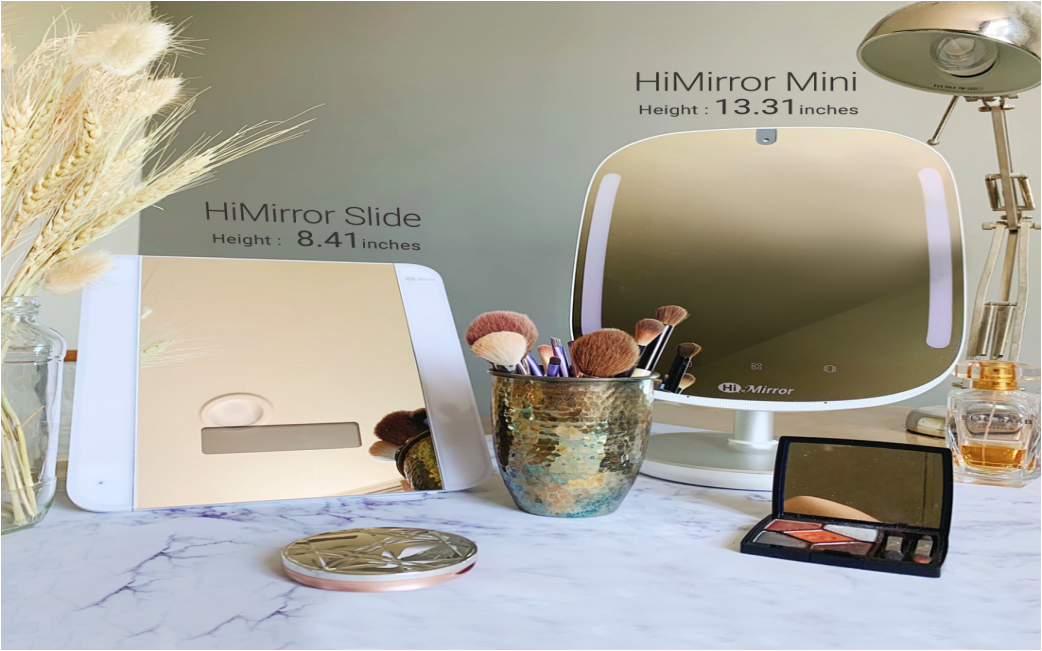 The HiMirror Slide and HiMirror Mini
The HiMirror Slide and HiMirror Mini
Source: HiMirror[/caption] Japan-based Shiseido launched an Internet of Things (IoT) personalized skincare system called Optune in July 2019. The Optune system blends digital technology with skin science and beauty research to offer real-time skincare formulas based on 80,000 skincare patterns. The Optune system uses an iPhone app and algorithm to analyze users’ skin condition, environmental data and sleep data to detect biological rhythm disruption and offer appropriate skincare suggestions. This technology tracks a range of factors affecting the skin, from temperature and humidity to mood and menstrual cycle, then sends a product recommendation for the day. The app pairs with a device that loads a cartridge with the recommended skincare product. [caption id="attachment_102731" align="aligncenter" width="700"] Shiseido’s Optune skincare system
Shiseido’s Optune skincare system
Source: Shiseido[/caption] Sephora has been a pioneer in using AR tools in beauty retail. Launched in February 2016, Sephora's Virtual Artist lets consumers virtually try on thousands of shades of eyeshadow and lipstick through a smartphone or at kiosks in stores. The app measures eyes and lips in real-time, then tracks facial feature points to virtually apply cosmetics to the user’s face. The Virtual Artist quickly gained traction: The company says users have tried on 200 million shades and made over 8.5 million visits to the feature online and through the app since launch. In 2012, Sephora collaborated with Pantone to offer Color IQ, which the company says is the only beauty service that scans a consumer’s face, assigns a Color IQ number and recommends foundations that match the user’s unique skin tone. Sephora says the tool created more than 14 million Color IQ matches between launch and the end of 2016. [caption id="attachment_102732" align="aligncenter" width="700"]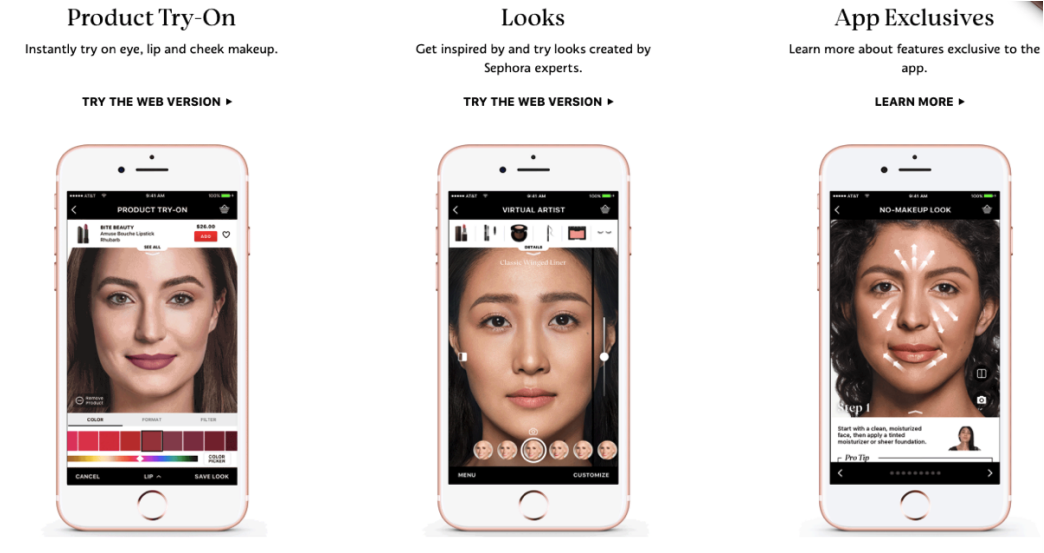 Sephora Virtual Artist
Sephora Virtual Artist
Source: Sephora[/caption] In 2018, Ulta Beauty enhanced its personalization strategy through the acquisition of AR beauty technology company GlamST and QM Scientific, an AI start-up. In 2019, the company launched an updated version of GLAMLab, Ulta’s AR-based mobile app feature that offers virtual try-on for makeup, hair color and eyebrow shaping. In 2019, Ulta also introduced an AI-based skincare virtual beauty advisor that asks consumers a series of dynamically generated questions and offers a set of personalized recommendations. Customers can then buy the products the app recommends if they want. [caption id="attachment_102733" align="aligncenter" width="700"]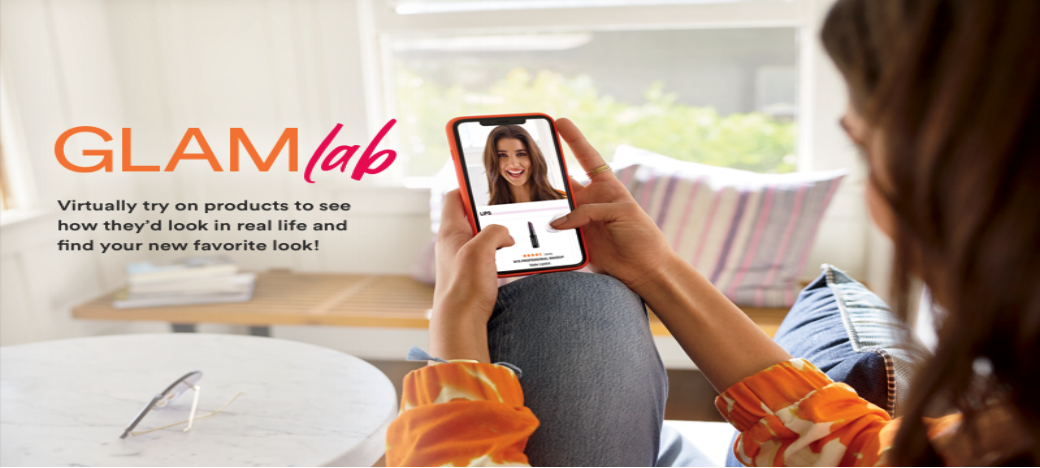 Ulta’s GLAMLab
Ulta’s GLAMLab
Source: Ulta Beauty[/caption]
Introduction: Technology Is Transforming Beauty
In today’s digital age, beauty consumers look for a high level of online interaction and expect ease and comfort with the brands they patronize. Brands and retailers are embracing new technologies such as AI, AR and 3D printing as they work to offer consumers a more personalized beauty shopping experience. Beauty technology is creating new solutions to meet this demand. Beauty technology also adds an additional layer of interaction to online and offline shopping brands can use to increase consumer engagement. Brands and retailers can transform these interactions into shopping opportunities. Most consumers also see value in these new technologies: A 2019 survey by global media platform Teads found 56% of beauty consumers see value in AR, virtual advisors, chatbots and other modern technologies, while 68% said they would like to try AR. The study surveyed 4,487 female Internet users aged 22-64 from eight countries: the US, the UK, Germany, France, Mexico, Japan, Italy and Brazil.Beauty Brands and Retailers Are Using Technology to Create a More Intuitive Shopping Experience
These are some of the beauty technologies leading global beauty brands and retailers are using to drive consumer engagement: [caption id="attachment_102724" align="aligncenter" width="700"] Source: Company reports[/caption]
Procter & Gamble (P&G) is using cutting-edge technologies to develop new beauty products and enhance the customer experience. Some of its major beauty tech products and services include:
Source: Company reports[/caption]
Procter & Gamble (P&G) is using cutting-edge technologies to develop new beauty products and enhance the customer experience. Some of its major beauty tech products and services include:
- Opté Precision Skincare System (Generation 2): First launched at CES 2019 (formerly known as the Consumer Electronics Show) and returned to CES 2020 in a second-generation iteration. The Opté Precision Skincare System includes a Precision Wand and Precision Serum. The Opté Precision Wand uses blue LED lights to detect discolored spots not easily seen by the naked eye; an integrated digital camera to capture 200 frames per second, delivering about 24,000 pictures for analysis; a minicomputer color algorithm which processes 70,000 lines of code to determine the size and intensity of each skin spot; and, a micro serum jet printer, with 120 thermal inkjet nozzles, depositing 1,000 drops of Optimizing Serum on each spot for complete coverage. The Opté Precision Wand pairs with Opté Precision Serum, which uses mineral pigments, spot-lightening skincare ingredients and moisturizers to achieve the desired results. Opté is like an “inkjet printer for your face” (according to the company) because it helps to precisely cover hyperpigmentation. It will be available in the summer of 2020.
- Future X Smart Store: P&G’s Japanese cosmetics brand SK-II launched the Future X Smart Store in May 2018. The future X Smart Store features technology such as facial recognition, AI and computer vision to analyze skin and offer personalized recommendations. Unlike typical skin scans, no direct facial contact is needed: users can get the analysis sitting in an individual booth. An interactive skincare wall provides skin analysis results, users can then proceed to a smart beauty “bar” to browse recommended products via responsive digital screens and add products they want to their shopping carts. The consumer drives the entire experience.
- Olay Skin Advisor: This system uses AI to analyze user selfies and make customized skincare recommendations. It is trained on 50,000 algorithms that can (among other things) calculate skin age and offer tailored advice. P&G said more than one million women have used Olay Skin Advisor since its launch in 2016.
 Future X Smart Store by SK-II
Future X Smart Store by SK-IISource: P&G[/caption] L’Oréal is gearing up to offer customers virtual makeup and hair color try-ons, real-time beauty consultations online and AI-powered skincare diagnostics following its 2018 acquisition of Canada-based AI and AR company ModiFace. ModiFace has developed advanced 3D virtual make-up, color and skin diagnosis service technologies. The acquisition is a part of L'Oréal’s broader digital acceleration strategy to enhance its brands’ technology offerings to improve the beauty shopping experience—and drive engagement and the associated sales. L'Oréal introduced an AI-powered at-home skincare offering called Perso at CES 2020. The three-in-one system creates formulas for foundation and lipstick that will be unveiled at a later date. Perso is a four-step solution for customized skincare formulas. The user snaps a selfie with the Perso app; Perso uses ModiFace-powered AI to identify skin conditions such as large pores, dark spots or wrinkles; the app uses Breezometer geo-location data to assesses environmental conditions that could affect skin, such as pollution, humidity, UV index and pollen; finally, the user enters skincare goals, such as eradicating dark spots, pigmentation, pore size or dullness. The system analyzes all the data and offers a single portion of a personalized skincare product custom-made on the spot. Perso will be launched in 2021. [caption id="attachment_102726" align="aligncenter" width="700"]
 L’Oréal’s Perso
L’Oréal’s PersoSource: L’Oréal[/caption] In 2017, L'Oréal subsidiary Lancôme launched Le Teint Particulier, a custom-made foundation machine that uses a handheld colorimeter, a type of digital scanner, to detect facial skin tone. The results are run through a computer that uses an algorithm that can choose from 20,000 different shades. The findings are sent to a device that mixes the foundation to create a custom foundation for the customer. [caption id="attachment_102727" align="aligncenter" width="700"]
 Lancôme’s Le Teint Particulier
Lancôme’s Le Teint ParticulierSource: Lancôme[/caption] In 2017, L’Oréal’s Research and Innovation Technology Incubator, in collaboration with the France-based hair care company Kérastase and consumer electronics company Withings, unveiled one of the world’s first smart hairbrushes: Kérastase Hair Coach Powered by Withings. The brush features a microphone that measures dryness, frizziness, split ends and breakage; a built-in accelerometer and gyroscope that analyses brushing patterns and brush stroke; conductivity sensors which measure whether the hairbrush is being applied on wet or dry hair; and, sensors which analyze hair quality during and after brushing. The brush vibrates to warn if the user brushes too hard, and a microphone and other sensors record the sounds of breaking hair, along with other factors, to build a profile of the user based on their hair. The brush shares the data through a dedicated mobile app and recommends products to complement the user’s hair care routine. [caption id="attachment_102728" align="aligncenter" width="700"]
 Kérastase Hair Coach Powered by Withings
Kérastase Hair Coach Powered by WithingsSource: L’Oréal
[/caption] Neutrogena introduced Neutrogena MaskiD at CES 2019. Neutrogena MaskiD is a personalized micro-3D printed face mask made from natural cellulose and skincare ingredients based on the customer’s unique needs. The MaskiD is used with the Neutrogena Skin 360 app that captures skin data and facial measurements to offer personalized recommendations. Neutragena launched the 2.0 version at CES 2020 with the first generation of NAIA, an AI-powered skin health coach. Neutrogena MaskiD provides personalization in three steps. First, consumers use a smartphone 3D camera to click a selfie, which creates a multi-dimensional map of the face, including measurements of lips, shape of the nose, space between the eyes and other unique physical characteristics. Then, the Neutrogena Skin 360 app analyzes the data to understand skin needs, and creates the virtual equivalent of a dermatologist, making a recommendation on ingredients and where they should be applied to specific parts of the face. Finally, the ingredients are produced using a proprietary 3D printing process onto a custom-fit hydrogel mask with specific ingredients to be applied to specific parts of the mask to deliver specific treatments to each part of the face. [caption id="attachment_102729" align="aligncenter" width="700"]
 Neutrogena MaskiD
Neutrogena MaskiDSource: Neutrogena[/caption] HiMirror, a beauty-tech brand owned by Taiwan-based New Kinpo Group, developed one of the world’s first smart mirrors in 2016. The HiMirror has a built-in camera to capture an image of users faces each time they log in, which it scans for wrinkles, pores, brightness levels, red spots and fine lines. The beauty assistant then rates these factors from "good" to "poor” and sends beauty tips and personalized product recommendations. HiMirror also lets customers scan a product to reorder or receive notifications when expiration dates are coming up. In 2018, the company launched the product’s latest generation, the HiMirror Mini, with additional features such as touch screen, a USB charging outlet, LED makeup lights, a magnifying camera and a table stand. The HiMirror Mini is equipped with Amazon Alexa capabilities and can connect to social media platforms such as YouTube, Facebook, Spotify and Instagram. In 2019, the company launched Makeup Studio and HiTube features on HiMirror. The Makeup Studio uses AR technology that lets users virtually try on new makeup, including seven types of makeup with various colors, textures and patterns. HiTube lets users show YouTube videos on the screen to watch while getting ready, or minimize the image to hear only audio. In October 2019, HiMirror launched its newest model called HiMirror Slide. The HiMirror Slide comes equipped with slidable panels and a foldable, rotatable stand for easy storage, and landscape and portrait viewing. Similar to its counterparts in the HiMirror portfolio, HiMirror Slide gives skin analysis and offers personalized recommendations, along with other smart features, such as Amazon Alexa and social media connectivity. HiMirror showcased its Enterprise Pro version of the HiMirror Slide at CES 2020. This version will help retailers and others offering skincare services to better serve customers with personalized skincare tracking and analysis. [caption id="attachment_102730" align="aligncenter" width="700"]
 The HiMirror Slide and HiMirror Mini
The HiMirror Slide and HiMirror MiniSource: HiMirror[/caption] Japan-based Shiseido launched an Internet of Things (IoT) personalized skincare system called Optune in July 2019. The Optune system blends digital technology with skin science and beauty research to offer real-time skincare formulas based on 80,000 skincare patterns. The Optune system uses an iPhone app and algorithm to analyze users’ skin condition, environmental data and sleep data to detect biological rhythm disruption and offer appropriate skincare suggestions. This technology tracks a range of factors affecting the skin, from temperature and humidity to mood and menstrual cycle, then sends a product recommendation for the day. The app pairs with a device that loads a cartridge with the recommended skincare product. [caption id="attachment_102731" align="aligncenter" width="700"]
 Shiseido’s Optune skincare system
Shiseido’s Optune skincare systemSource: Shiseido[/caption] Sephora has been a pioneer in using AR tools in beauty retail. Launched in February 2016, Sephora's Virtual Artist lets consumers virtually try on thousands of shades of eyeshadow and lipstick through a smartphone or at kiosks in stores. The app measures eyes and lips in real-time, then tracks facial feature points to virtually apply cosmetics to the user’s face. The Virtual Artist quickly gained traction: The company says users have tried on 200 million shades and made over 8.5 million visits to the feature online and through the app since launch. In 2012, Sephora collaborated with Pantone to offer Color IQ, which the company says is the only beauty service that scans a consumer’s face, assigns a Color IQ number and recommends foundations that match the user’s unique skin tone. Sephora says the tool created more than 14 million Color IQ matches between launch and the end of 2016. [caption id="attachment_102732" align="aligncenter" width="700"]
 Sephora Virtual Artist
Sephora Virtual ArtistSource: Sephora[/caption] In 2018, Ulta Beauty enhanced its personalization strategy through the acquisition of AR beauty technology company GlamST and QM Scientific, an AI start-up. In 2019, the company launched an updated version of GLAMLab, Ulta’s AR-based mobile app feature that offers virtual try-on for makeup, hair color and eyebrow shaping. In 2019, Ulta also introduced an AI-based skincare virtual beauty advisor that asks consumers a series of dynamically generated questions and offers a set of personalized recommendations. Customers can then buy the products the app recommends if they want. [caption id="attachment_102733" align="aligncenter" width="700"]
 Ulta’s GLAMLab
Ulta’s GLAMLabSource: Ulta Beauty[/caption]